I wish I had used left brain vs right brain tests sooner in my teaching career. During my first year of teaching, I did the normal first day/first week of school activities. Little get-to-know-you activities where I found out their favorite color and snack. They told me how many pets they had and what their favorite subject was. All of that was great, but it really didn’t inform my instruction of this new class specifically.
As an icebreaker in one of our PD sessions, we did a left brain right brain activity. This sparked an idea in my mind to give this test to my students on the first day of school.
While there is a lot of different research as to whether we actually have a more dominant side of our brain, that really doesn’t apply here. I’m not really interested in whether a student is using one side of their brain more dominantly, I’m more interested in figuring out HOW my students think as quickly as possible. Are they more orderly, logical, and black and white? Or are they more creative, and thinking outside the box?
Left Brain vs Right Brain Tests
So I created a left brain vs right brain test for students for the first few days of school that gave me so much information about:
- how they learn best
- how they process information
- what I can do as their teacher to best serve them
It didn’t take a lot of time, and the information that I gathered from this activity was far more useful than any other first day activity that I have tried.
How I Assessed Students (And Made It Fun!)
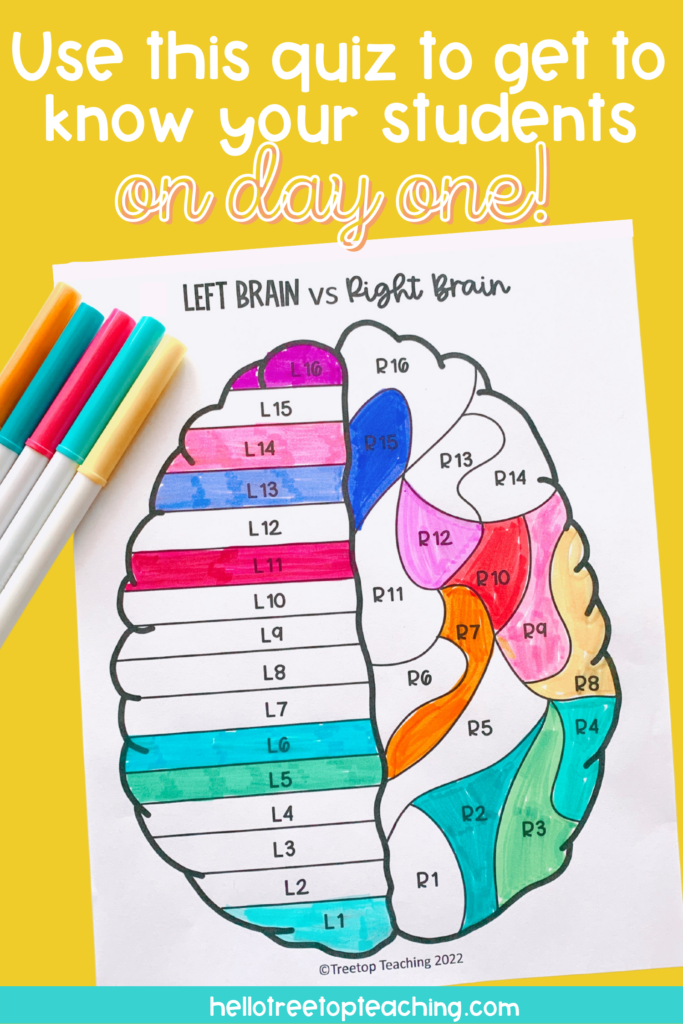
I have given the left brain vs right brain tests in many different ways over the years, but theses are the ones that have been most successful (and fun!):
- Read the questions orally to the whole group and have them color a brain diagram to record their answers
- Give each table or group a copy of the questions to answer and record on their brain printable
- Use the task card version of the questions to make a task card scoot. Students travel around the room answering the questions and recording the answers on their brain diagrams.
I then hung their “brains” on my bulletin board to display each of the brains of my students. Students were able to see how unique their brain was, but also the similarities that they have with other students in the class.
This also meant that when I was introducing an activity, I could reference their brains. I might say “If you are left-brained, this will be an opportunity for you to strengthen your right side.” Again, I’m not so concerned whether or not it’s actually the left or right side of their brain working. I’m identifying an area where they can grow and develop. Because they have taken the test, they also desire to strengthen their “weaker” side.
Balance of Left and Right Brain is Ideal
It is very important for students to have a balance in the left and right brain. They need to be able to creatively come up with ideas and solutions to things. But they need to be able to orderly and systematically accomplish the solution. Some of the best minds throughout history are balanced in these two things.
It’s also really helpful for students to know what their strengths are, and how that can fit with the weakness of another person. It gives them a place and an importance and not only your classroom but in the world. While I’d like to see them work toward balance in these strengths, even the students who remain very heavily one-sided leave my class knowing that there is a need and a place for them in this world.
Activities that Work the Left AND Right Brain
There are a lot of activities that you can implement in your classroom that will strengthen both sides of the brain in the same activity. Here are a few that I used in my classroom throughout the year to continue to create learning tools for every student in my room.
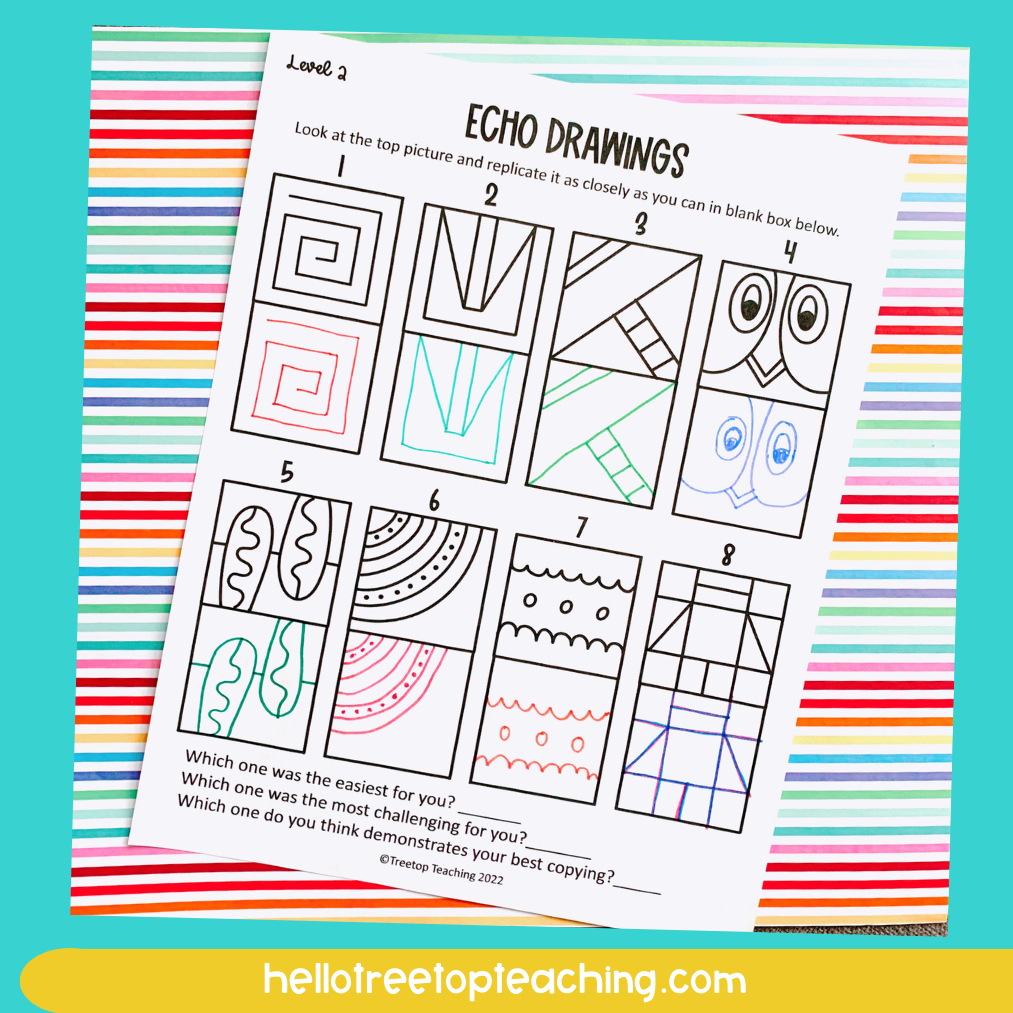
Echo Drawings
Echo drawings require students to look at a picture and then replicate it in the box below. It uses both sides of the brain because they are creating something exactly as it was above, but it will take some creativity to figure out how to do that using the lines and curves. Having multiple difficulties will also ensure that you can continue to meet each student where they are.
Number Puzzles
Number puzzles are a great way to strengthen both sides of the brain because students have to use what they know about numbers combined with creative problem-solving techniques. Just having the number sense will not allow them to get the answers. Just having creative problem solving skills will equally be inefficient.
These puzzles are great because they are introducing the idea of variables and building algebraic understanding in my students. However, they just think that they’re solving some fun picture puzzles.
Cursive
Cursive handwriting is another one that uses both sides of the brain. Students are attending to spelling and conventions that they have memorized, but they are also looking at letter formation that connects in a fluid motion. I often find that students love to learn cursive, and this is a great thing to add into your word work centers if they’re writing spelling or vocabulary words.
Capitalization and Punctuation Rules
I was always under the assumption that language skills were in the right brain category, and I struggled to find a way to connect that for my left-brain learners. So I created rule numbers for capitalization and punctuation so that students would not only have to know where the comma goes given the context of the sentence, but they would also have to supply the concrete rule number that gave the reason for why that goes there.
I found that this was a great way to cater an activity to all the different strengths in my classroom but also continue to push students- even the ones who seem to have a natural sense of where commas or capitalization should occur.
Assess Again at the End of the Year
And if I’m going to put in the effort to try to balance these two strengths in my students, I need a way to assess them at the end of the year as well. When I prep this activity at the beginning of the year, I print a brain on the front of the page and on the back of the page. We use one for the beginning of the year, and then I save it and have them complete the same activity at the end of the year.

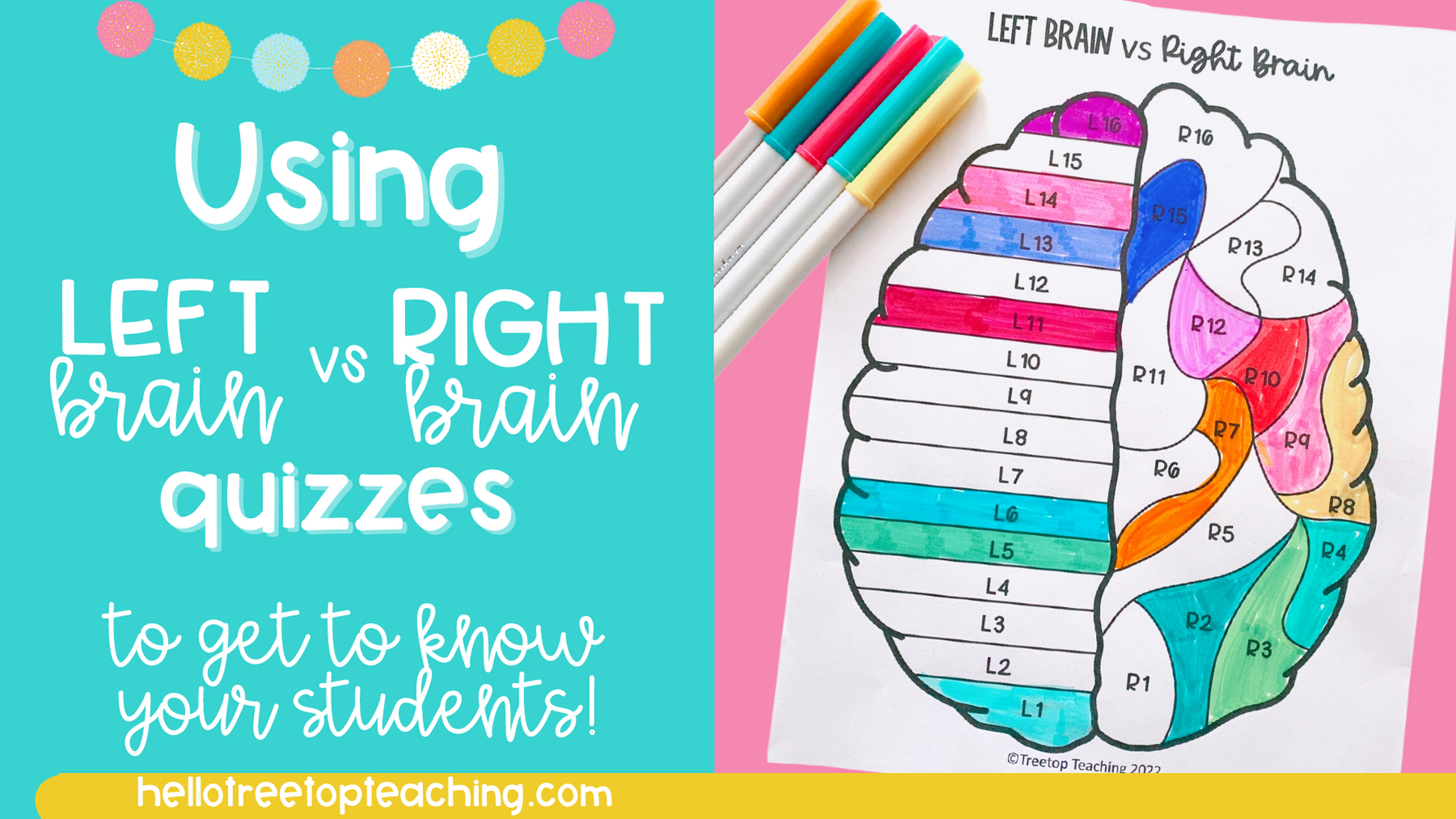
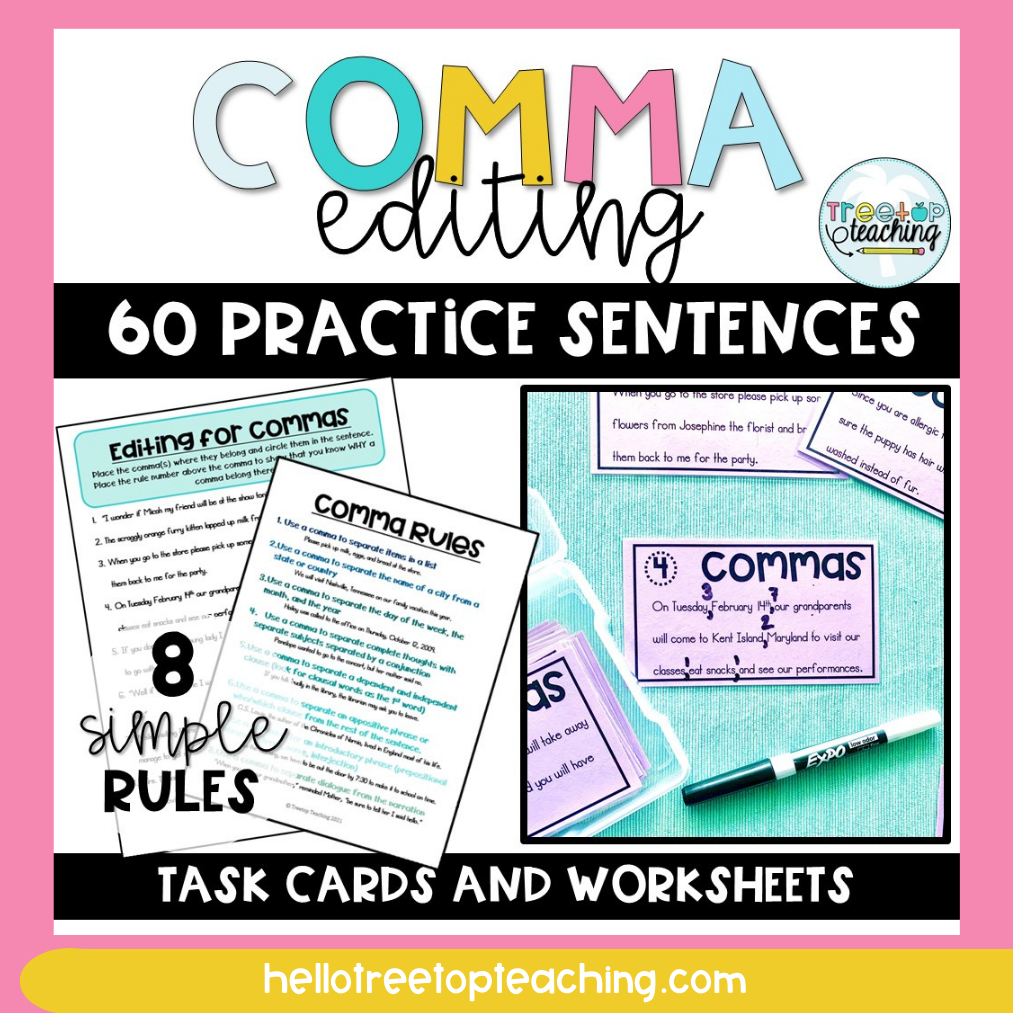
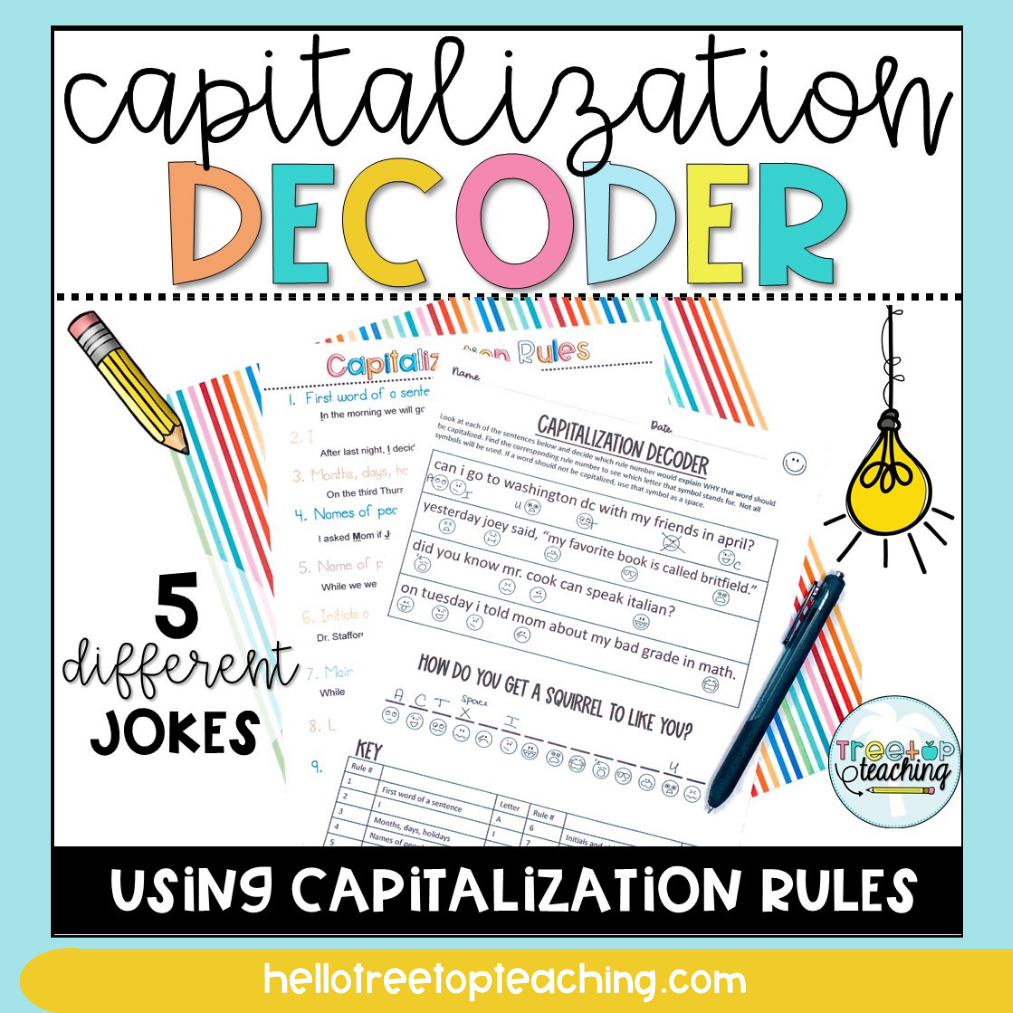

12 Responses
What a great activity! I have my copy, have printed all I need off, and I can’t wait to use it when school starts next week!
Thank you!
Yay! I hope it was a useful tool for you to get to know your new students!
Hi,
I love all you wrote about the right brain left brain test! I was wondering if you had this available to buy?
I do! You can find the links throughout this post, or you can send me an email at lauren@hellotreetopteaching.com and I reply with the direct link for you!
Please send the resources on right and left brain
Here is a direct link to the resource if you’d like it!
https://www.teacherspayteachers.com/Product/Left-Brain-vs-Right-Brain-Tests-8235529
I would love a direct link to the left/right brain activity.
Yay! I hope you enjoy it! Here is the direct link:
https://www.teacherspayteachers.com/Product/Left-Brain-vs-Right-Brain-Tests-8235529
Left brain right brain link, please? Thank you!
Yay! I hope you enjoy it! Here is the direct link:
https://www.teacherspayteachers.com/Product/Left-Brain-vs-Right-Brain-Tests-8235529
Left brain right brain link, please? Thank you!
Hi, I just bought this activity from TPT and I can’t wait to use it next week during an orientation day with my new students for next year.
I just wanted to ask, what are the common questions and struggles that students generally have with this activity? and do you have any pro tips to help deal with some of these questions?
One question or problem I can already foresee coming up is, “I don’t know Miss, what if I do both left brain and right brain things, which do I colour in?”
Any advice or extra pro tips you can give will be greatly appreciated.
Thank you